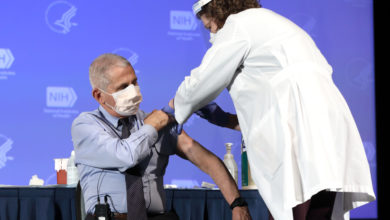Saying No to Logan

When the Steubenville case broke into the news it was met with a combination of handwringing and finger pointing. While there was plenty of predictable shaming of the victim, the response to Steubenville also included some long overdue soul-searching about the privileged place that sports holds in American schools, and the culpability of adults other than the victim’s mother. I’m glad that those discussions are happening, but I’d also like to get people to talk about what is, and even more importantly, what is not, taught in schools about the nature of rape and consent.
There is no shortage of debate about sex ed in the United States. Unfortunately, most of it has gotten stuck on whether it should be taught at all, and if it is whether it should include anything other than Abstinence Only. If you happen to have a child in a school that actually teaches reality based information on STD and pregnancy prevention, it’s tempting to let your guard down and think “well that’s not too bad, then” and move on. I think it’s worth it to keep an eye on what else may be being taught.
As a case in point, our school system includes sex ed units every year in science classes from the 5th through the 9th grade. All of the units are, as my daughter put it, “relentlessly heteronormative”, but they do a fair job of introducing basic reproductive anatomy, what to expect physically during puberty, and a variety of methods of birth control and STD prevention that are reasonably accurate. On the other hand, they also perpetuate damaging stereotypes of gender and sexuality. These include the trope of girls as the gate-keepers of sex, and and the misconception that many rapes are just a failure of communication. While the professed intention is to teach effective communication, the message that comes across is that not only is it the responsibility of girls to say “no”, but that they must say it in exactly the right way.
In my daughter’s classes the teachers pulled in material that they found useful. The 8th grade teacher used a selection of worksheets out of a series available on line. Three of these lessons are: The Basics (of communication), Taking “NO” for an Answer, and Saying “NO”. My daughter’s teacher did not use the Taking “NO” for an Answer lesson. Before I address the lessons, I want to say that I believe that both the people who created them and my daughter’s teacher had the best of intentions, but that good intentions are not a protection against bad results.

The Basics lesson introduces The Story of Logan, which is then used through some of the other lessons. Logan is a “nice, but crazy, guy” who asks out every girl he sees. In the story he asks four girls out, each of whom says “no” in a different way, only one of them the right way. Jessie is too mean, she’s used as the “aggressive” example. She’s punished by losing all of her friends because “after all, Logan was a nice guy. And it’s flattering to be asked.” By what standard is he “nice” if he’s making all the girls uncomfortable? And if he’s asking all of the girls out, is it really flattering? And why is it her duty to be flattered even if someone else would be?
Sally is used as the “manipulative” example. She directs his attention elsewhere and slips away. She’s punished by having her boyfriend break up with her because this makes him realize that she’s “dishonest”. I think that I’d go with resourceful, but your mileage may vary. Realistically girls are often taught to avoid conflict, not so much by overt directions as by the repercussions to everyday interactions. As someone who in her younger days politely said “no, thank you” to more than one stranger who asked me out, only to have them start shouting every gendered expletive in my face, I learned to be sweet and oblique and get away as quickly as possible. Would every guy after those have done that? Obviously not, but it was horrifying enough that it wasn’t worth risking another repeat, and it’s not fair to ask girls to be mind readers.

Moving on, Pam is the “passive” example. She says “yes” to going out with Logan, even though she doesn’t really want to. “Fortunately” (apparently) her parents step in and don’t let her go out with him. Could it be that they don’t think he’s all that “nice”? We are left wondering. Sophea says “no” in just the right way. “No, that’s sweet, Logan.” She tells him that she’s not ready to go out with anyone. Sophea is the example of being “assertive”. Would she still have been a good example if she were interested in going out with someone, just not with him? And how would they have worded her answer? It’s a scenario that’s pretty common, and they haven’t addressed it at all.
But the biggest problem is that it is all about teaching the girls to consider Logan’s feelings, while there is no analogous story where Logan is asked to consider the girls’ situations. Girls who say “no” the wrong way are clearly punished in the story. On the other hand, Logan’s behavior is just presented as a bit goofy and pathetic, not as something that makes the girls justifiably uncomfortable. The later lesson on Saying “NO” returns to the Logan story and doubles down on the girls’ responsibility. It stresses the importance of saying the word “no”, itself, and if possible couching it in feel good statements. In the imagined world of the lessons this may work, but in the real world not so much. (Trigger warning for all following links for rape, as well as suicide and gang rape) In ordinary conversation we tend to avoid saying “no” right out. It comes across as rude and offended people can make your life miserable. So these lessons are asking girls to assess exactly how aggressive the other person is likely to be, still say “no” clearly, and not hurt his feelings.

Beyond this, the lessons are stressing the presence of the word “no”, not the absence of the word “yes”. Why isn’t this a good idea? One of the witnesses to the Steubenville rape testified that he “didn’t know exactly what rape was” and one of the claims of the defense was that Jane Doe “didn’t affirmatively say no”. The boys and the defense attorney resorted to the idea that it was the girl’s responsibility to clearly signal a lack of consent, not the boys’ to recognize that someone who is incapacitated cannot give consent. Some may argue that the defense didn’t work in that case, but I would argue that it would have been better to stop the rape from happening at all. The emphasis on “no” makes the victim responsible, and it gives plausible deniability to people who abuse. It’s not just Steubenville. It’s Silsbee, Texas and Richmond, California. It’s what happened to Rateah Parsons and to Daisy Coleman. The perpetrators in all of these cases didn’t even try to hide what they were doing, because they didn’t think that they needed to. They assumed that everyone would agree that the girl involved was the culpable one. They aren’t alone, and in many cases they aren’t wrong.
Returning to the sex ed classes, yes, there was a lesson on accepting “no” that had the potential to involve boys equally by teaching them to have a role other than making demands. Unfortunately, it was a hand-wave compared to the battering ram lessons aimed at girls. The take-home message was “that persisting after two “no’s” is aggression.” This means that girls have to clearly say “no” twice. It also does little to help boys protect themselves from unwanted advances, especially from adults. Logan didn’t even make an appearance, and any chance to discuss why his behavior was insulting and disquieting to the girls is lost. And did I mention that the Taking “NO” for an Answer lesson wasn’t taught at all at my daughter’s school?

To be clear, these lessons are not the source of the problem, but they are a great, big inflamed symptom. When the admonishments are almost all to girls – “don’t do this”, “don’t do that”, “say this”, “but be sure to say it exactly the right way” – then the implicit messages in the real world are that girls are responsible for preventing unwanted advances, girls must keep desired intimacy from becoming abusive and girls who don’t follow all the rules are fair game. There are programs out there aimed at helping boys understand issues of rape, consent, and empathy, and they seem to work. It would be great to see more like them incorporated into high school programs. In order for that to happen, though, we need to hold even good sex ed programs to a higher standard than “at least it’s not Abstinence Only.”
Featured image, Jigsaw No by Horia Varlan
First Logan story image
Although i have the word ‘No’ in me, by id iom
second Logan story image
The Correct Thing, by Kristin M





This is both horrifyingly scary and a fabulous post. Thank you for writing it. I work hard to teach my son not to draw the very conclusions this lesson plan seems to encurage boys to draw, which is incredibly frustrating.
I know, right? This isn’t going to make your son’t life any easier.
Pardon me, but his comment may get long…
First I hope that some one pointed out to the teacher that a lesson was “forgotten” and should be given. I would hope that they would go back to it if called out. Maybe school officials should be notified. Taking no for an answer is a very important first step, however I have always preferred the concept of getting “Enthusiastic Consent”. It clears things up. After all if someone says “yes” because for any other reason then they really want to, why would you want too.
As for our four girls in the lesson, I think they totally botch that all together. I think you nailed where they messed up with Jessie, Pam and Sally. But let’s just say that Logan isn’t the sweet, (and creepy) guy that we are told he is. Sophea’s answer could easily be interpreted as “ask me again in a month.” And in one version of the story Logan is the type of guy who becomes and stalker and follows Sophea around. Then Sophea gets victim blamed for leading him on.
The heteronormativity is definitely a problem, another problem here is the reinforcement of gender stereotyping. Boys and men need to be taught that they have a right to say no. That their friends have a right to say no without being mocked. That no one ever has the right to do this to anyone, under any circumstances.
Agreed, Daisy. To be honest there is a full series worth of posts on things wrong in the lessons.
This lesson begins in kindergarten. My son wanted to be friends with some girls. They would rather sit together and don’t want him to sit near them. I asked him if he was being nice to them, and he said he was, but they still didn’t want to be friends with him, and that someone should make them. This is where the lesson begins! I told him that he’s a very nice boy, and that it’s sad that they don’t want to be friends with him, but that he should respect their space and not bother them, because nobody can force someone else to like them. Yes, it broke my heart to hear that my son was being rejected, but nurturing entitlement to girls’ best behavior would only set him up for far worse scenarios.
The lesson continues… recently [1st grade now] he got in trouble for hitting someone. I could have said “you know better than to hit someone, they could get hurt”, but instead I said “you are not entitled to touch someone without their permission, and if someone is bothering you a better response is to walk away and tell the teacher. Sometimes it takes a lot of strength to walk away.”
“Go to the teacher” is one of my favourite phrases. Mostly because my eldest is at the receiving end in school (and trying to retaliate against her little sister as a proxy at home).or watching
Unfortunately, this tactic relies on the teacher being halfway competent and not reading too much stories about Logan watching Arthur.